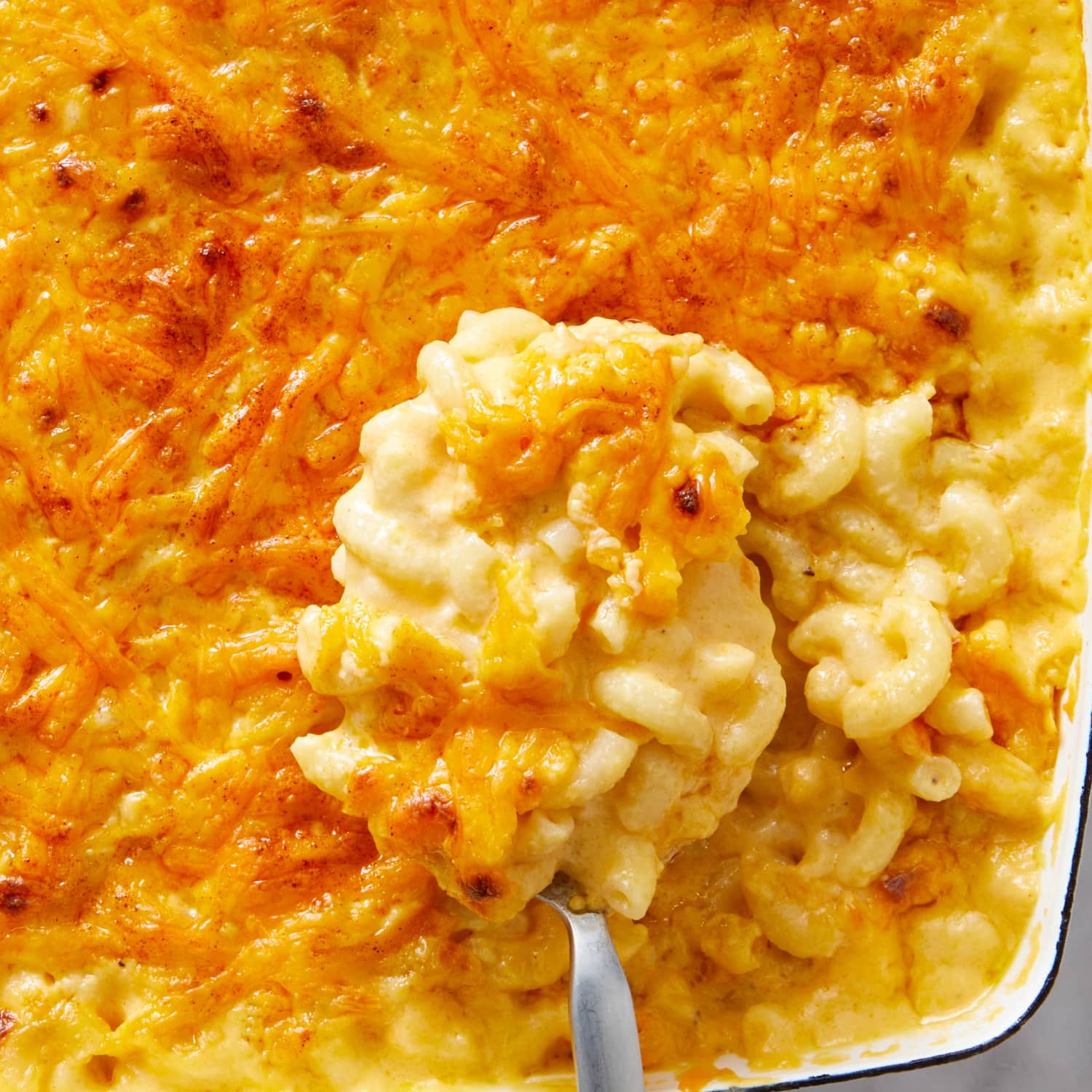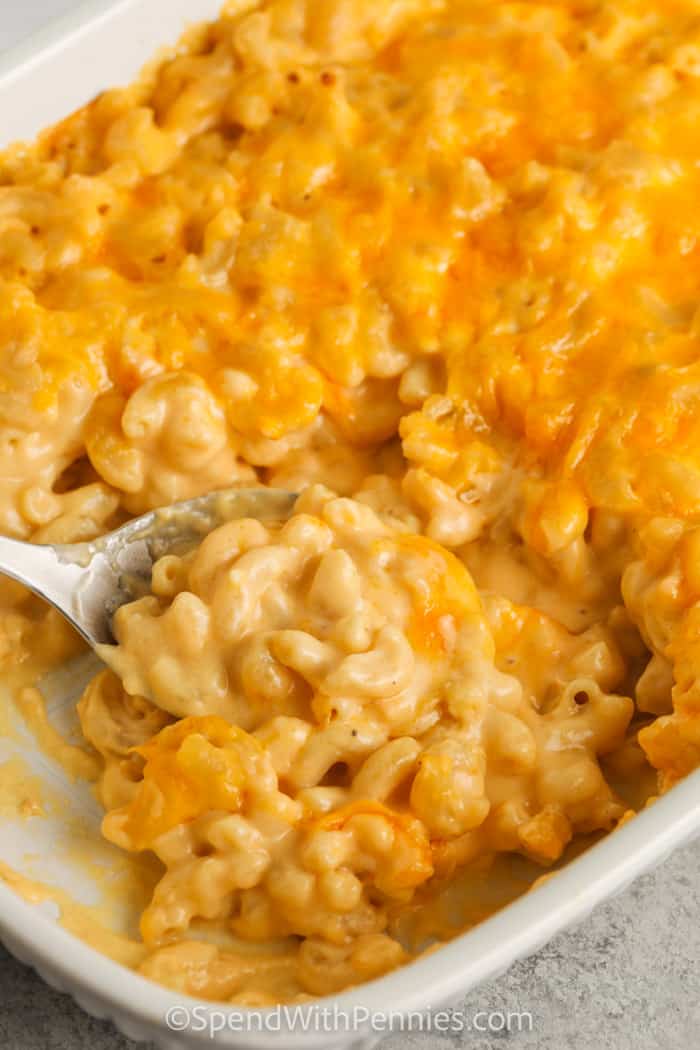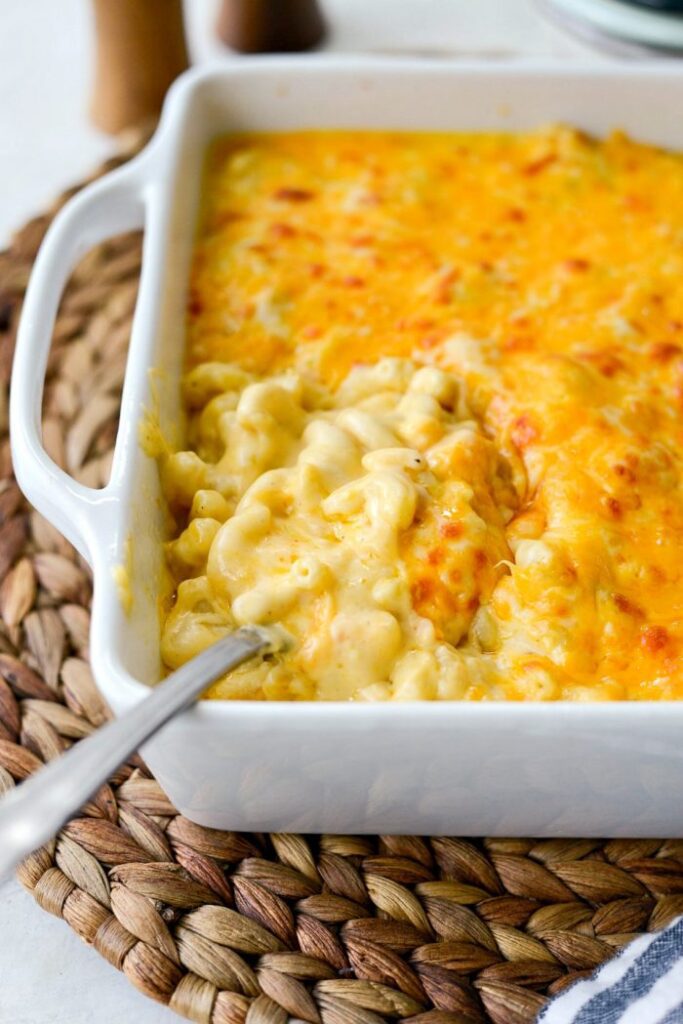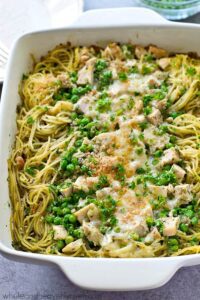Easy Baked Macaroni and Cheese is a delicious recipe that combines amazing flavors and textures.
This classic baked macaroni and cheese represents the ultimate comfort food, featuring tender pasta enveloped in rich, creamy cheese sauce topped with crispy, buttery breadcrumbs. What sets this recipe apart is its perfect cheese balance – sharp cheddar provides tanginess, while the technique ensures a smooth, velvety sauce that clings to every piece of pasta. The contrast between the creamy interior and crunchy topping creates textural harmony that has made this dish a beloved favorite for generations.
The secret to exceptional mac and cheese lies in understanding the science of cheese sauce. A proper roux base (butter and flour cooked together) provides stability, preventing the sauce from breaking or becoming greasy. Gradually incorporating milk allows the starch molecules to properly swell and thicken the sauce, while adding cheese off heat preserves its emulsifying properties. The result is a luxuriously smooth sauce that maintains its integrity even when baked.
Historical Roots and Cultural Significance
Macaroni and cheese has a surprisingly international history. The combination of pasta and cheese dates back to 14th century Italy, where cookbooks documented early versions. Thomas Jefferson encountered the dish in France and brought it to America, where it became a staple of Southern cooking. The baked version with breadcrumb topping evolved in the early 20th century as home ovens became more common.

During the Great Depression, mac and cheese gained popularity as an economical yet nutritious meal that could stretch precious ingredients. Its boxed version emerged in the 1930s, making it accessible to millions. Our from-scratch version honors this history while elevating the dish with techniques that maximize flavor and texture. It represents how humble ingredients can be transformed into something extraordinary through proper technique.
Ingredient Selection Guide
Cheese: Use a combination of cheeses for complexity. Sharp cheddar provides flavor, while Monterey Jack or fontina add creaminess. For extra sharpness, add Parmesan or Asiago. Always grate your own cheese – pre-shredded contains anti-caking agents that can affect sauce texture.
Pasta: Elbow macaroni is traditional, but cavatappi, shells, or rigatoni work well. Choose shapes with nooks that trap sauce. Cook pasta very al dente (1-2 minutes less than package directions) as it will continue cooking in the oven.

Breadcrumbs: Panko breadcrumbs create exceptionally crispy topping. For homemade, pulse stale bread in food processor. Season breadcrumbs with garlic powder, onion powder, or dried herbs for extra flavor.
Dairy: Whole milk provides richest sauce. For extra creaminess, substitute 1 cup milk with heavy cream. Warm the milk before adding to roux for smoother incorporation and faster thickening.
The Science of Cheese Sauce
Creating stable cheese sauce involves understanding emulsion science. The roux acts as an emulsifier, with starch molecules surrounding fat droplets to keep them suspended. Heating causes starch granules to swell and absorb liquid, thickening the sauce through gelatinization.
Cheese contains both fat and protein, along with emulsifying salts. Adding cheese to hot sauce can cause proteins to tighten and squeeze out fat, resulting in grainy texture. Adding cheese off heat and stirring gently preserves the emulsion. Acidic ingredients like mustard help stabilize the emulsion by affecting protein behavior.
Step-by-Step Technique Mastery
Roux Preparation: Cook butter and flour for at least 1 minute to eliminate raw flour taste, but don’t let it darken beyond pale gold for white sauce. Whisk constantly to prevent lumps and ensure even cooking.
Milk Incorporation: Add milk gradually, whisking constantly to prevent lumps. Cold milk added too quickly can cause lumps, while warm milk incorporates more smoothly. Cook until sauce coats the back of a spoon.
Cheese Addition: Remove sauce from heat before adding cheese. Stir in gradually until melted but not overmixed. Overheating or vigorous stirring can break the emulsion, causing oil separation.
Baking Technique: For optimal texture, bake until bubbly around edges and topping is golden brown. Let rest before serving to allow sauce to set slightly for cleaner portions. The carryover heat will continue cooking the pasta.
Customization and Variations
This recipe serves as a perfect canvas for creativity: Add cooked bacon or pancetta for smokiness; Incorporate vegetables like broccoli, peas, or caramelized onions; Mix in cooked lobster or crab for luxurious version; Use different cheese combinations like Gouda and ham for Dutch influence; Add spices like cayenne, nutmeg, or smoked paprika for depth.
For crispy edges, bake in individual ramekins. For extra creaminess, layer with additional cheese between pasta layers. For sophisticated twist, top with fried shallots or onions instead of breadcrumbs.
Professional Chef Secrets
For ultra-smooth sauce, strain through fine-mesh sieve before combining with pasta. For enhanced flavor, infuse milk with bay leaf, onion, and peppercorns before making sauce. For exceptional richness, replace 1/4 cup butter with bacon fat in roux.
For make-ahead option, prepare completely but don’t bake. Refrigerate overnight and add 10-15 minutes to baking time. For freezer-friendly version, freeze unbaked and bake from frozen, covering with foil for first 30 minutes.
Serving and Presentation
Serve in colorful ceramic baking dish for rustic presentation. Garnish with fresh herbs like chives or parsley for color contrast. Offer hot sauce on side for those who prefer spice.
Pair with crisp green salad to cut richness. For wine pairing, choose crisp white like Sauvignon Blanc or light red like Gamay. For non-alcoholic option, sparkling cider complements the richness beautifully.
Storage and Reheating
Leftovers keep refrigerated for 4 days. Reheat in oven at 350°F for best texture restoration. Microwave reheating can make sauce oily – if using microwave, reheat at 50% power and stir frequently.
To freeze, portion completely cooled mac and cheese into airtight containers. Freeze for up to 3 months. Thaw in refrigerator overnight before reheating. Add splash of milk when reheating to restore creaminess.
Final Thoughts
As you scoop through the golden crust into the creamy, cheesy interior, appreciate how this humble dish has comforted generations and continues to bring people together around the table. May it become a cherished part of your family’s culinary tradition.

Easy Baked Macaroni and Cheese
Ingredients
Method
- Preheat oven to 375°F
- Cook pasta al dente according to package directions
- Drain and set aside
- Melt butter in large saucepan over medium heat
- Whisk in flour and cook for 1 minute until golden
- Gradually whisk in milk until smooth
- Cook until thickened, stirring constantly
- Remove from heat and stir in cheese until melted
- Season with mustard powder, paprika, salt and pepper
- Add drained pasta to cheese sauce, stir to coat
- Transfer to greased 9×13 baking dish
- Mix topping ingredients and sprinkle over pasta
- Bake for 25-30 minutes until bubbly and golden
- Let rest for 5 minutes before serving
- Garnish with additional parsley if desired



